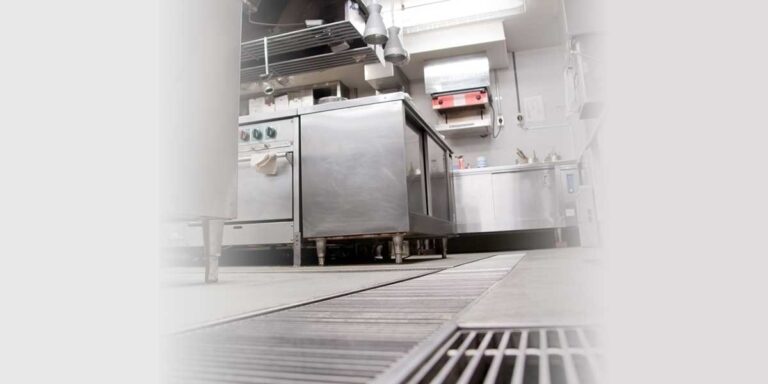Achieving an excellent restaurant hygiene rating is just as important as receiving good food reviews. Demonstrating that a high standard of hygiene is maintained in your establishment gives customers peace of mind that their favourite meals are prepared and served with all the necessary care and attention when it comes to health and safety. That’s why restaurant hygiene inspections are an essential regulatory activity for the catering industry.
If you implement and maintain good hygiene practices continuously, these standardised checkups needn’t be a headache. But it’s only natural to feel the pressure when assessment day rolls around––sometimes, unexpectedly! With so many elements set to come under scrutiny, it’s always good to be prepared.
Our restaurant hygiene checklist is here to help you ensure that you’re ready when the EHO arrives.
What to expect during a restaurant hygiene inspection
An Environmental Health Officer (EHO) is the person who’ll be evaluating your restaurant’s food hygiene and safety standards. They will be sent from your local authority, and it is their responsibility to enforce compliance with the necessary regulations that keep consumers and employees protected from the potential risks associated with food preparation. The evaluation an EHO makes should be impartial and objective. As per the government’s guidelines, here’s what they’ll be reviewing:
- Your premises
- How you work
- Your food safety management system
- The types of food you make and prepare
To give you a more detailed overview, these are some of the things you can expect them to look at on the day:
- Handwashing stations for routine use
- Hand drying facilities
- Proof of registration with the environmental health department
- Application-specific cleaning equipment
- Evidence of good ventilation
- Safe and hygienic food preparation workstations
- Provision for separate storage of different food types
- Approved fire safety equipment
- Safe waste management system
- A consistent record of previous checks
- Evidence of stock rotation and elimination of outdated produce
- Separate basins and sinks for hand, dish and food washing
- Correct refrigerator temperatures
- Relevant qualifications and training of staff where applicable
- Schedule and procedure for cleaning and safety
Setting the bar high and encouraging everyone on your team to put their best foot forward will help you achieve that coveted five-star rating.
Hygiene of food rooms and equipment
Food passes through many locations around a restaurant; the pantry, refrigerators, kitchen and dining areas are just a few of the critical zones. To satisfy the EHO’s requirements, you’ll have to address the following points:
- Is your equipment clean and in good working order?
- Do all food preparation and storage areas receive a regular deep clean?
- Have hand contact surfaces been disinfected?
- Do staff use application-specific cloths that are boil-washed after use?
Food handling and storage
Without a well-planned food handling and storage strategy, many of your key ingredients may end up going to waste. Poor management of how your stock is stored and used can lead to many nasty surprises as ingredients are left to expire or become accessible to pests.
Here’s what you need to ensure you not only pass your evaluation but also set up a system that will promote resource utilisation efficiency in your restaurant:
- Create a protocol for immediately processing and storing deliveries.
- Use separate storage compartments for cold, frozen, dry or fresh food ingredients to avoid cross-contamination.
- Have distinct use-by labels on high-risk foods.
- Check fridge and freezer temperatures for consistency.
- How do you safely thaw frozen items?
Paying attention to the finer details, such as ensuring that cupboard and refrigerator door handles are wiped down, and that separate cleaning cloths are allocated for each particular surface, is essential. Don’t forget to demonstrate how you regularly clean food storage containers, what your schedule for stock rotation is and your procedure for waste disposal.
Personal hygiene
Your staff play a critical role in how hygiene is maintained throughout your restaurant. Food preparation and cleaning of dishes and surfaces is only one step in the effort to prevent the spread of germs. Employees must adhere to certain personal hygiene requirements to prevent cross-contamination and ensure the safety of all stakeholders.
The EHO may ask the following questions:
- Do staff have the appropriate protective clothing, and is it regularly cleaned?
- Are there designated handwashing basins supplied with hot and cold water, soap and a nearby hand drying facility?
- Do staff toilets receive regular sanitising?
- Do staff wear their hair back, and are hairnets or hats provided?
Your protocol for personal hygiene and the requirements you place upon staff must be clearly documented and available for the EHO to view. Training employees in a way that helps them to understand the importance of the guidelines encourages accountability and pride in their work.
Ventilation
In an environment that’s subject to varying temperatures due to the processes involved in food preparation (frying, steaming, roasting, flambéing), proper ventilation is required. The buildup of smells, moisture from steam, and smoke pollution can adversely impact employees health. These vapours can also trickle into your dining area and affect your customer’s experience. Effectively airing out enclosed spaces helps to dissipate lingering odours and protect everyone’s wellbeing.
During a restaurant hygiene assessment, you’ll have to demonstrate how you keep your premises effectively ventilated. Add these tasks to your restaurant hygiene checklist:
- Check that your HVAC system has received up-to-date maintenance.
- Ensure that extractor fan filters are clean.
- Check that your ventilation system complements your cooking load.
- Does your ventilation process work throughout the year? –– consider whether employees are comfortable and not exposed to draughts.
Pest and waste control
Places where food is handled naturally attract pests. It’s important to take all possible measures to prevent the appearance of these unwanted visitors. A thorough waste management strategy is an essential preventative measure in keeping your premises free of pests.
Your restaurant hygiene checklist should cover the following points:
- Is the site free of any pests, and are adequate measures in place to prevent them? (For example, fly screens and insectocutors/electric fly killers.)
- Is food sealed and well protected when in storage?
- Is the waste storage area effectively separated from other foods?
- Is the refuse area regularly cleaned and protected against pests?
Staff should know how to appropriately dispose of waste, preventing the accumulation of refuse or rotting food products that could generate mould spores and potentially cause other contamination.
The food safety system used to manage risks in the food industry – HACCP (Hazard Analysis and Critical Control Point) – helps businesses such as restaurants and food manufacturers to identify potential hazards in their environment. By bringing awareness to these risks, they can then determine the appropriate measures to prevent issues from arising and prove to food hygiene inspectors that the site is adequately protected and best practices are in place to ensure that customers and staff’s health and safety have been prioritised.
For you to gain and keep your excellent restaurant hygiene rating, consistency in the application of best practices is required. You should create a hygiene procedure that mirrors the HACCP system and train staff on how to apply it.
Currently, restaurants face the challenge of having to renew consumer confidence in the restaurant dining experience. Customers need to once again feel safe in what is undeniably a highly social environment. For many establishments, what happens next will be make or break from a financial perspective. It’s therefore essential to equip yourself with as much knowledge as possible on how to improve health and safety with the aim of welcoming clients through your doors once again. We’ve created an insightful guide to help you increase covers and footfall; click here for six simple steps that you can put into action today.
To learn how to improve the efficiency in your restaurant click below.








